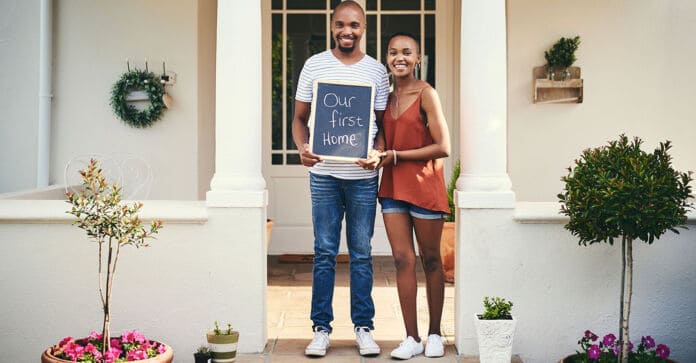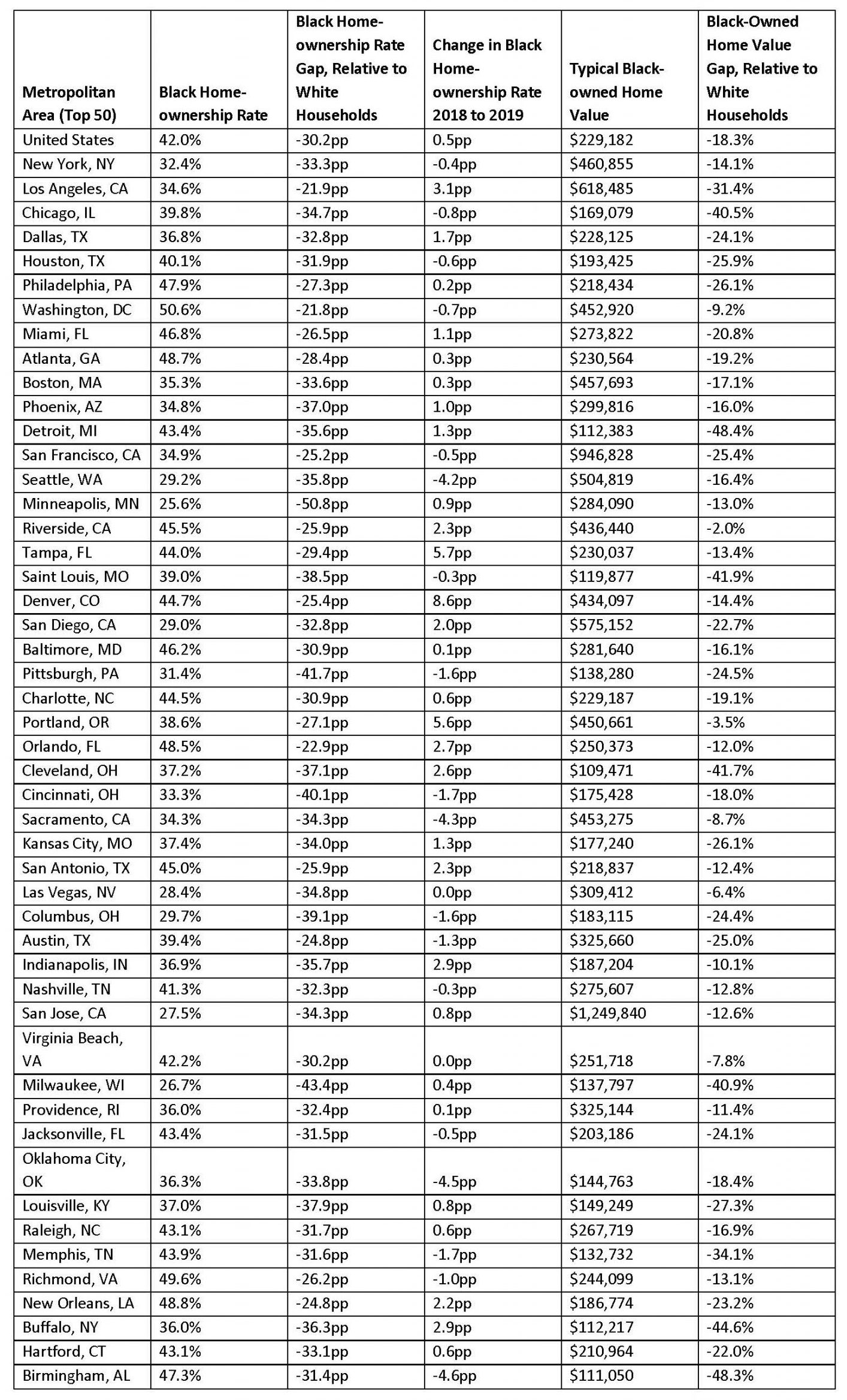
NNPA NEWSWIRE — Black-owned home values have also grown just over one percentage point faster than White-owned home values each year for the last three years. In February 2020, Black-owned home values were up 4.6% from a year earlier, while White home values were up 3.6%. In February 2021, Black home values were up 10.9% from the previous year, while White home values were up 9.7%. This faster appreciation among Black-owned homes narrowed the overall home value gap from 16.7% to 15.9%.
A new Zillow analysis finds Black households saw modest progress narrowing the racial wealth gap during the pandemic, and that housing factors will largely impact whether that gap grows or shrinks throughout the next 10 years.
- The typical Black household has only about 23% of the wealth of a typical White household
- Zillow analysis finds home value and homeownership rate disparities directly account for almost 40% of the $3 trillion wealth gap[1]
- If the typical Black-owned home was worth the same as the typical White-owned home, Black wealth would more than double (from $931 billion to $2.1 trillion)
SEATTLE, April 26, 2021 – Incremental increases in homeownership rates and home values among Black households would help shrink the current $3 trillion racial wealth gap by hundreds of billions of dollars over the next decade, according to a new Zillow analysis.
Today’s typical Black household has only about 23% of the wealth of a typical White household, down from 34.6% before the Great Recession. Housing factors — including lower home values and rates of homeownership — directly account for nearly 40%[2] of that gap, with assets like investments in stocks and bonds and retirement accounts making up the rest.
“Housing will be a prominent factor determining the course of the racial wealth gap over the next decade,” says Zillow economist Treh Manhertz. “The issues caused by historic discrimination won’t be solved quickly, but addressing things like increasing access to credit, more-equitable lending standards and reducing exclusionary zoning could make buying more accessible and bring significant strides toward closing the wealth gap. In the most optimistic scenario, Black millennials could see housing equality in their retirement, and finally pass on some real wealth to the next generation.”https://servedbyadbutler.com/adserve/;ID=168170;size=728×90;setID=329915;type=iframe;click=CLICK_MACRO_PLACEHOLDER
About 42% of Black households own their home, compared to 72% of White households, and Black-owned homes are typically worth about 18% less than White-owned homes. Zillow estimates that if Black homeownership rates and home values rose to match those of their White counterparts, Black wealth would more than double (from $931 billion to $2.1 trillion).
Zillow analyzed home value growth and homeownership rate changes for Black households under five different scenarios through 2031. In the most optimistic, Black wealth would grow by more than half a trillion dollars — from $931 billion to $1.46 trillion. In the most likely, it would increase to about $1.18 trillion.
In that most likely scenario — which projects Black home values growing 5% faster than home values generally and Black homeownership growing at 0.5 percentage points per year — equality in housing wealth wouldn’t come until 2183. If Black home values grow 15% faster than home values generally and Black homeownership grows at 1.5 percentage points per year — the most optimistic scenario explored in the analysis — the timeline for housing wealth equality is moved up to 2066.
Opposite of the disproportionate hit taken during the Great Recession, Black households saw modest progress in narrowing the wealth gap during and leading up to the pandemic, a small start toward reversing trends that helped widened the gap over the past decade. This was largely due to housing gains. For example, the Black homeownership rate grew about one percentage point between early 2019 and early 2020, while the White homeownership rate stayed flat.
Black-owned home values have also grown just over one percentage point faster than White-owned home values each year for the last three years. In February 2020, Black-owned home values were up 4.6% from a year earlier, while White home values were up 3.6%. In February 2021, Black home values were up 10.9% from the previous year, while White home values were up 9.7%. This faster appreciation among Black-owned homes narrowed the overall home value gap from 16.7% to 15.9%.
Further, the analysis shows that Black homeownership rates and home values contribute equally to the housing portion of the overall wealth gap. If the Black homeownership rate increased by five percentage points the wealth gap would decrease by $74 billion. If home values increased by five percentage points the reduction would be $31 billion. Combined, alleviating these two disparities could cut the wealth gap by about 40%, to $1.9 trillion.
Lenders deny mortgages for Black applicants at a rate 80% higher than that of White applicants. The relationship between housing factors and the racial wealth gap underscores the urgency of efforts like expanding access to credit and other initiatives that break down color barriers to homeownership.
“It’s abundantly clear that this issue won’t solve itself naturally or quickly. The problems run deep and perpetuate inequality,” said Manhertz. “Intentional, targeted and dedicated policy is necessary to repair this broken system.”
Black – White Wealth Gap
Home values based on Zillow Home Value Index (ZHVI)
[1] In order to paint a picture of the majority of the population and not have our analysis swayed by the extreme wealth of the nation’s billionaire class, we measured the median wealth gap, tallying what the total wealth difference would be if every household had the typical wealth for their race and age group.
[2] Based on Zillow’s analysis of the 2019 Survey of Consumer Finances and ZHVI, home value and homeownership rate disparities combined account for an estimated 38.4% of the overall racial wealth gap.
[3] In order to paint a picture of the majority of the population and not have our analysis swayed by the extreme wealth of the nation’s billionaire class, we measured the median wealth gap, tallying what the total wealth difference would be if every household had the typical wealth for their race and age group.
About Zillow Group:
Zillow Group, Inc. (NASDAQ: Z and ZG) is reimagining real estate to make it easier to unlock life’s next chapter.
As the most-visited real estate website in the United States, Zillow® and its affiliates offer customers an on-demand experience for selling, buying, renting or financing with transparency and nearly seamless end-to-end service. Zillow Offers® buys and sells homes directly in dozens of markets across the country, allowing sellers control over their timeline. Zillow Home Loans™, our affiliate lender, provides our customers with an easy option to get pre-approved and secure financing for their next home purchase. Zillow recently launched Zillow Homes, Inc., a licensed brokerage entity, to streamline Zillow Offers transactions.
Zillow Group’s brands, affiliates and subsidiaries include Zillow®; Zillow Offers®; Zillow Premier Agent®; Zillow Home Loans™; Zillow Closing Services™; Zillow Homes, Inc.; Trulia®; Out East®; StreetEasy® and HotPads®. Zillow Home Loans, LLC is an Equal Housing Lender, NMLS #10287 (www.nmlsconsumeraccess.org).
